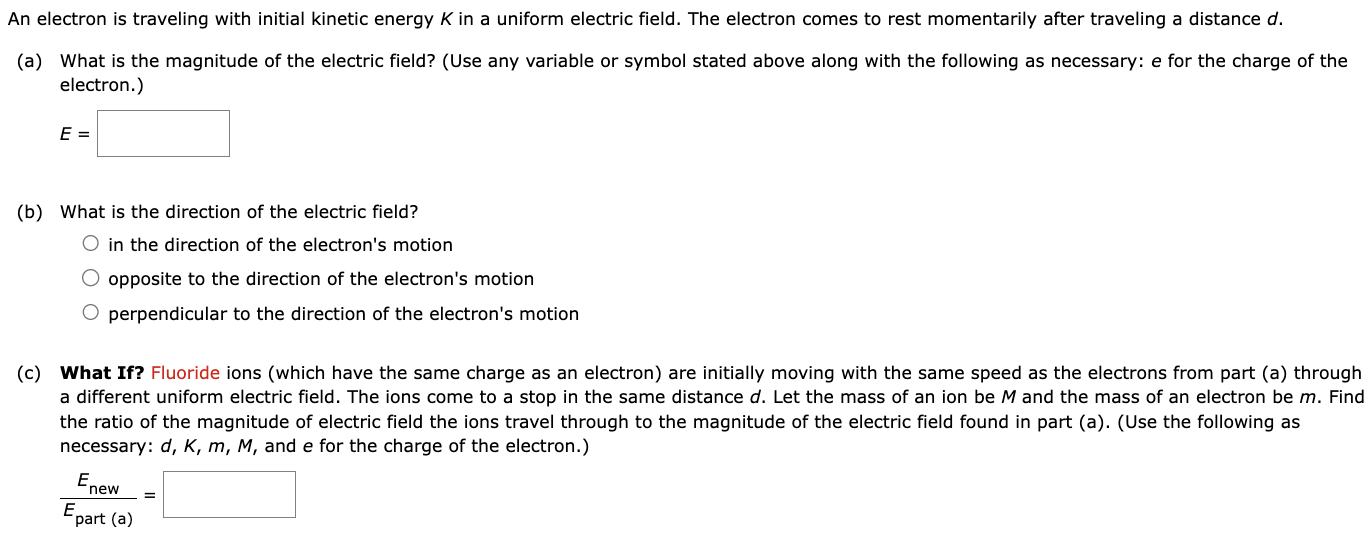An electron is traveling with initial kinetic energy K in a uniform electric field. The electron comes to rest momentarily after traveling a distance d. (a) What is the magnitude of the electric field? (Use any variable or symbol stated above along with the following as necessary: e for the charge of the electron.) E = (b) What is the direction of the electric field? in the direction of the electron's motion opposite to the direction of the electron's motion perpendicular to the direction of the electron's motion (c) What If? Fluoride ions (which have the same charge as an electron) are initially moving with the same speed as the electrons from part (a) through a different uniform electric field. The ions come to a stop in the same distance d. Let the mass of an ion be M and the mass of an electron be m. Find the ratio of the magnitude of electric field the ions travel through to the magnitude of the electric field found in part (a). (Use the following as necessary: d, k, m, M, and e for the charge of the electron.) Enew Epart (a) =
